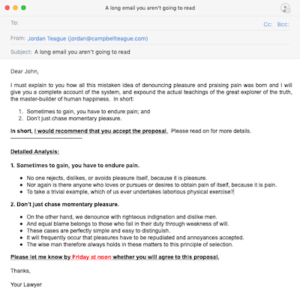Ever gotten an email that looks like this?

Or, have you ever sent an email like that?
Chances are, the person on the other end was like:
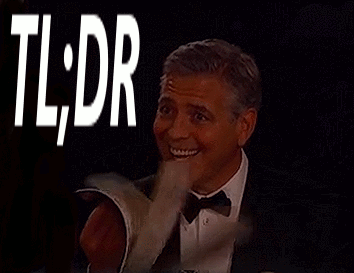
You probably didn’t get an answer to that email–or if you did, it was three weeks later.
Send a paragraph bomb, and you’re likely to get TLDR’d (too long, didn’t read). But sometimes you need to send a detailed email, chock full of info. So how do you craft an email that simultaneously conveys all necessary information and doesn’t lose your reader?
Here’s what I’ve learned from years of reading skimming more than my fair share of, shall we say, *diffuse* emails.
Summarize your main points before diving in.
It’s like a table of contents for your email. This gives your readers a framework for what to expect, and a context for all that information they’re about to absorb.
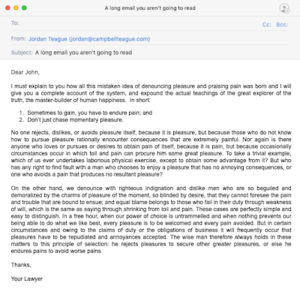
Use section headers.
It’s like chapter titles for your email. Like your intro summary, this helps provide some context. It also makes it easier for readers to stop, bookmark their place, and read the rest later.
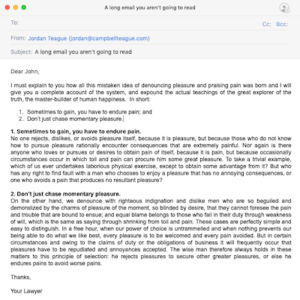
Break long chunks of prose into one-sentence bullets.
This creates order out of chaos. It also helps smoke out whether you’re belaboring an issue: if two of your one-sentence bullets are making the same point, delete one!
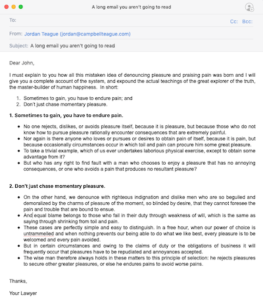
Include a call-to-action at the end.
Want a response to your email? Clearly tell the reader at the very end what you need from them, and when. This is especially helpful if the reader comes back to the email a second time and simply needs to be reminded what they need to do.

Include your bottom-line point at the beginning of the email.
It’s like answering a math problem on a test, and then showing your work. If all your reader has time to care about is the answer, they can skip the “show your work” part that follows. I find this particularly effective in the legal context, where clients rely heavily on their lawyers’ recommendations.

Say it more succinctly.
Magniloquence isn’t going to earn you any points with your email readers. Direct, plain, concise language will. The scarcest resource you work with is other people’s attention, so use it wisely!
